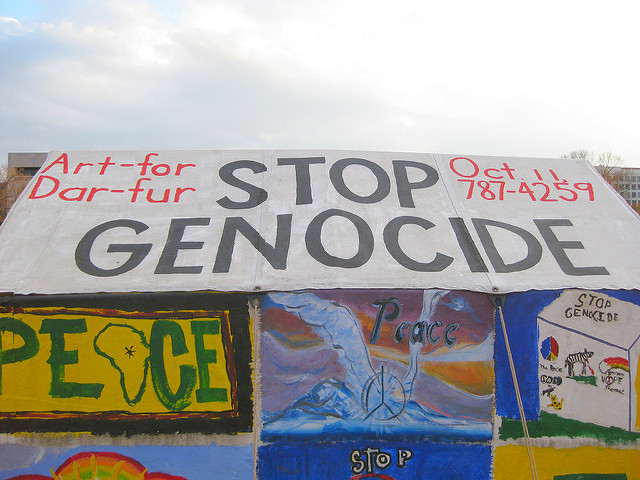
The White House recently published a press release decrying the violent behavior of MS-13 members, referring to the group as “animals” 10 times throughout the short post. In response, researchers Aliza Luft and Daniel Solomon wrote a Washington Post article discussing how dehumanizing language can enable violence. They draw upon historical examples, referencing animalistic rhetoric used in Nazi Germany and the 1994 Rwandan genocide. As Luft and Solomon explain, dehumanizing language alone cannot directly incite violence:
“Recent research suggests that promoting negative views of others can go only so far in motivating people to kill. In Rwanda, for example, Hutu militants issued calls on the radio to exterminate inyenzi, the Kinyarwanda word for ‘cockroach.’ But some Hutus refused to kill, saved Tutsis, or shifted stances from killing to not killing neighbors. This suggests that the decision to commit murder and other violence was difficult for Hutu civilians. Dehumanizing propaganda alone didn’t persuade Hutus to suddenly turn on their Tutsi peers.”
However, the researchers describe a number of ways dehumanizing language can, in fact, heighten tensions or lessen the cost of violent behavior:
“Language is not innocent. Dehumanizing propaganda helps to normalize extreme perspectives on how to address social problems. It grants legitimacy to those who do believe that certain others are inherently threatening, dangerous and ought to be eliminated from the community…Dehumanizing propaganda alters norms of what is and isn’t perceived as acceptable views or behavior. Even when people don’t believe what they hear on the radio or on TV, dehumanizing propaganda might make them hesitate more to speak out against it.”
In closing, Luft and Solomon argue that public action can counter the negative potential of dehumanizing language. They note, for example, that protest by Catholic leaders in Nazi Germany mobilized otherwise complacent members of the public into resistance. In an American context where communities of color face daily systemic violence, protest against dehumanizing language may serve a protective function.




